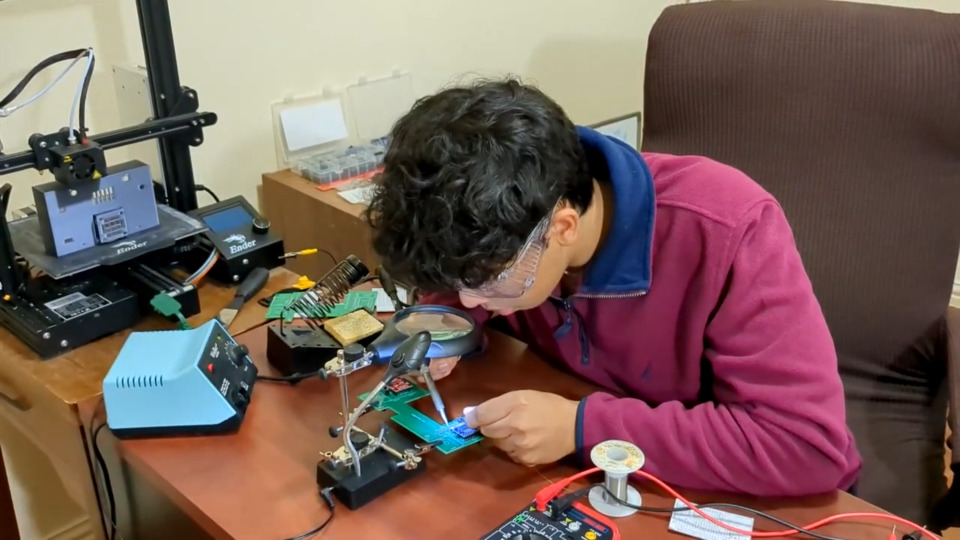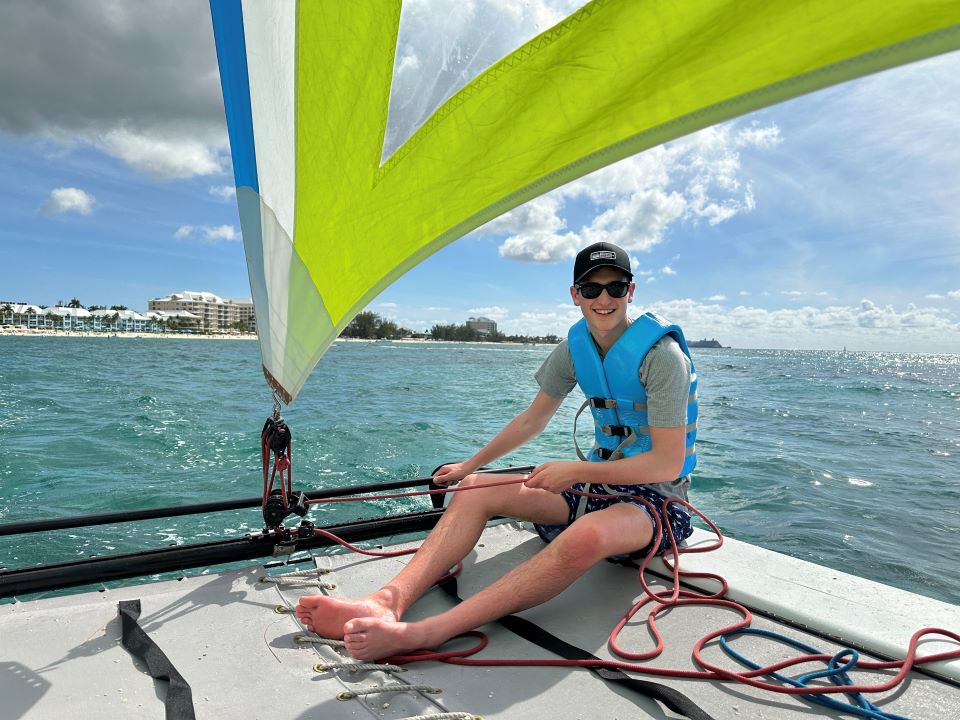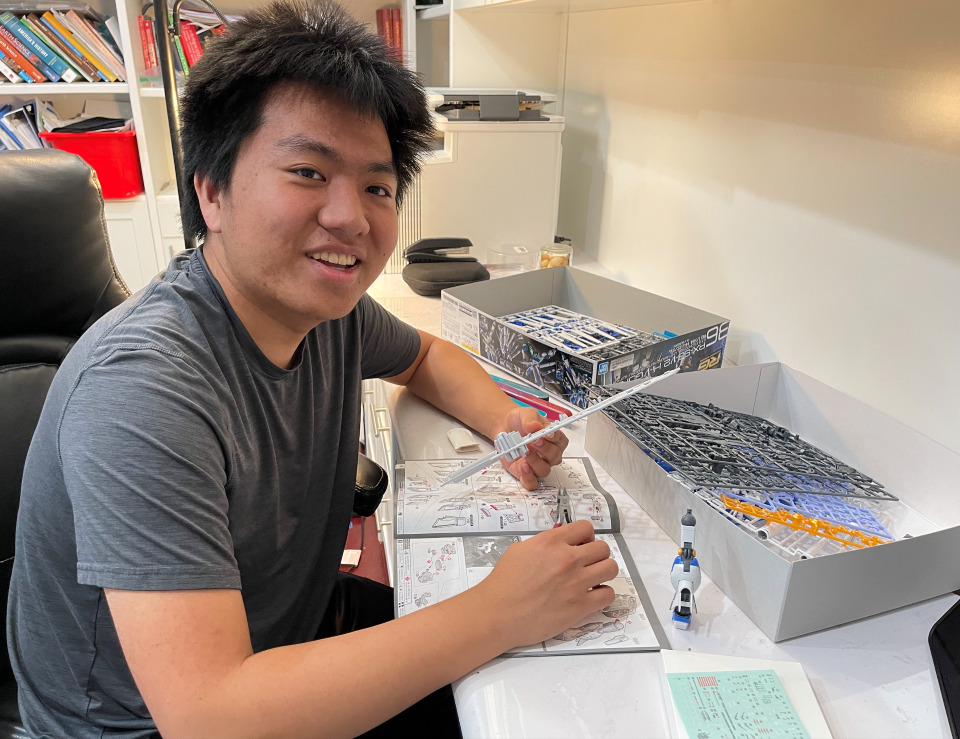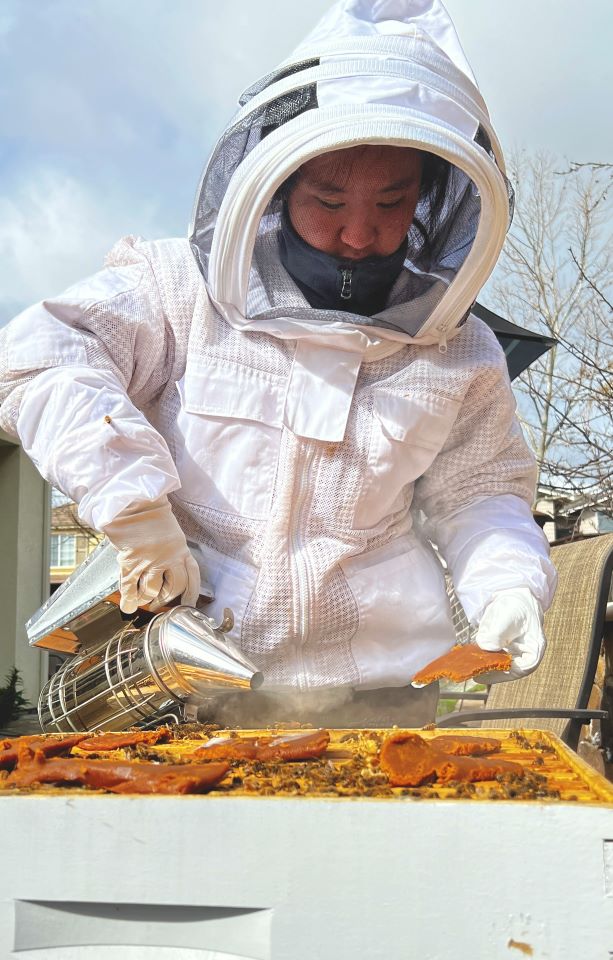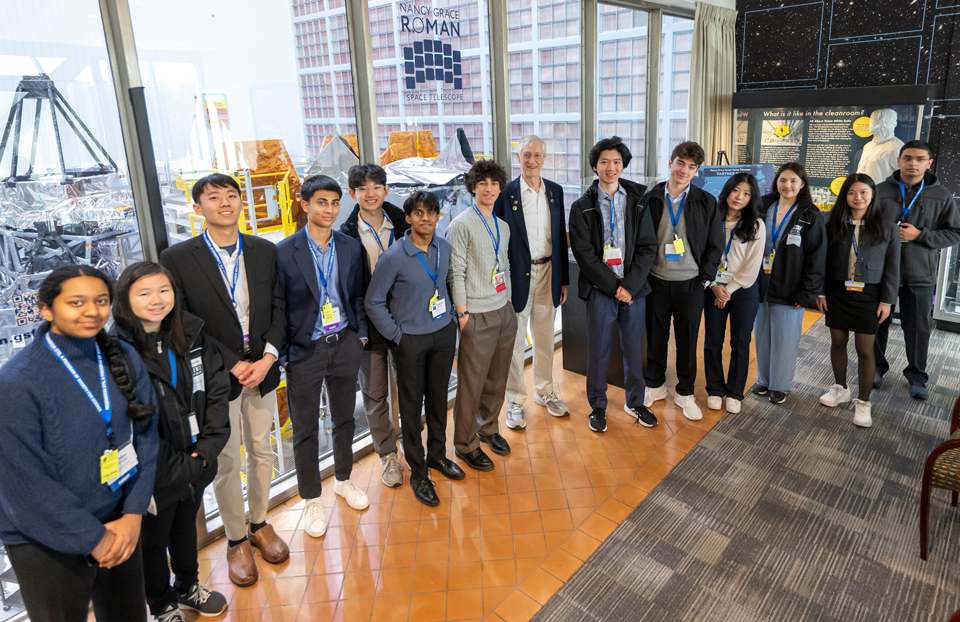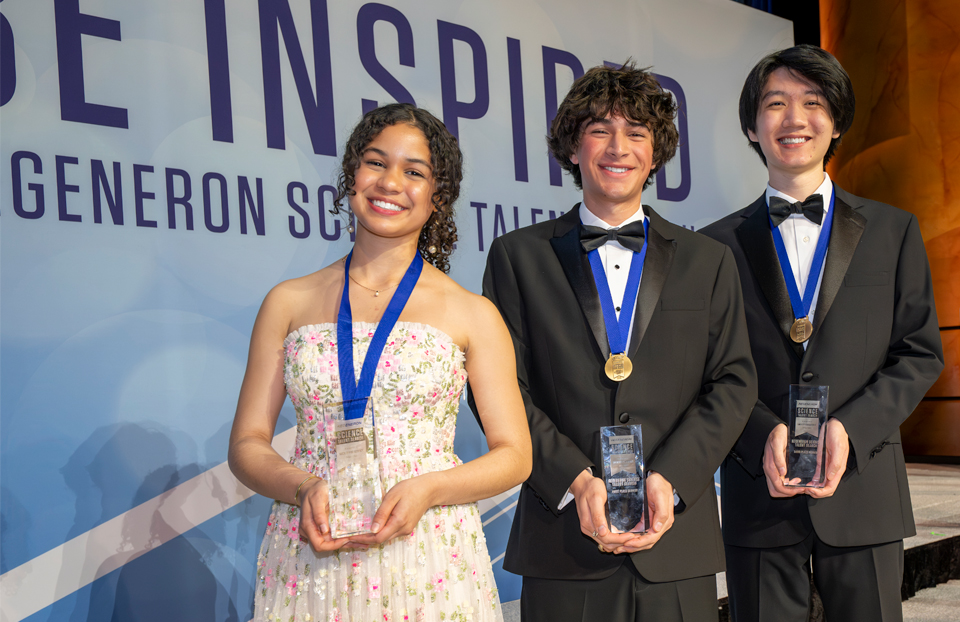7 Regeneron STS finalists find project inspiration in surprising places
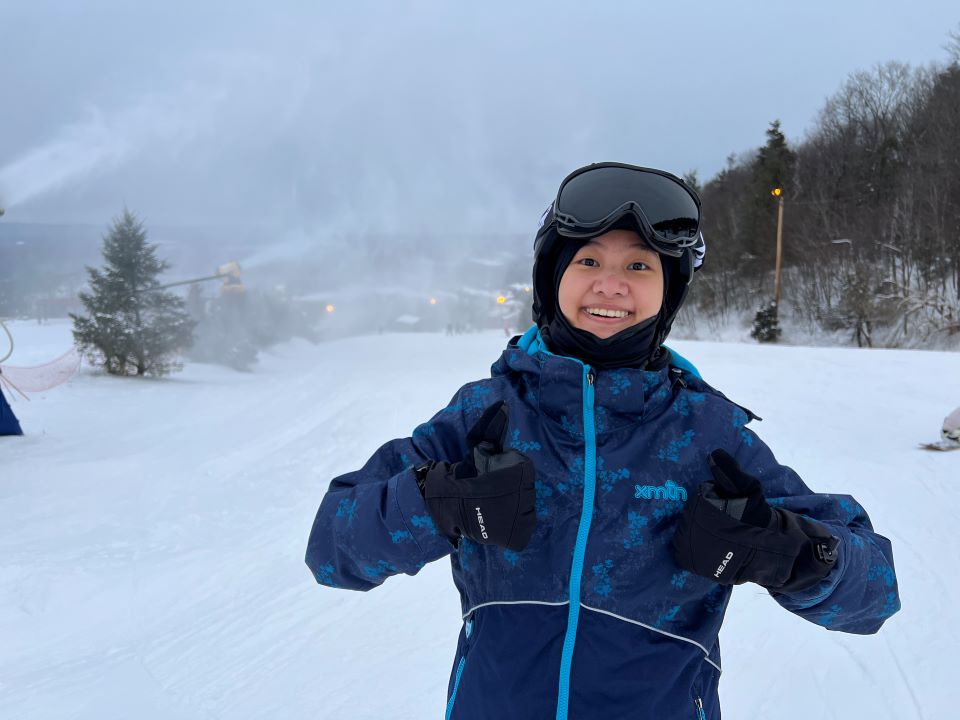
Scientific inspiration can come from unexpected sources or strike unexpectedly. Whether it’s within the bonds of one’s own family, while perusing through the treasures of a flea market or based on the collective struggles faced during COVID-19, these Regeneron STS finalists were inspired by things they encountered out in the world and brought their curiosities into the lab. Let’s hear more from them below!
William Gao
Centennial High School (Ellicott City, Maryland)
“Three of my grandparents lost their lives before I had the chance to meet them due to cancer. By the time the tumors were discovered, they had already developed metastases, leaving them with limited options and a grim prognosis. This is a scenario that plays out every day in countless households in developing regions across the world, where cancer diagnoses all too frequently come late. It’s a stark reflection on the healthcare inequities that persist in our world today. This realization fueled my passion and commitment to research. After my first project, which utilized machine learning to diagnose high-risk patients during the pandemic, I saw AI as a new approach with immense capabilities for supporting patients in underserved communities. After observing the shortcomings of current AI research in the field, I set out with the goal of using machine learning to create innovative and practical solutions for addressing inequities in cancer diagnosis.”
Sarang Goel
Texas Academy of Mathematics and Science (Denton, Texas)
“Over the past five years, I’ve witnessed a diabetic family friend gradually experience visual impairment, which has led to a significant loss of mobility due to navigational challenges. My concern for her motivated me to explore technologies that could help her regain her mobility and independence. Through my research I learned existing electronic travel aids and smart glasses can only address some of the challenges that over 250 million people with visual impairment in the world face. Many of these technologies are prohibitively expensive. While computer vision and machine learning approaches have been employed in proof-of-concept prototypes, there are currently no commercially available products. In recognizing these challenges, I embarked on an exciting personal journey to create a device that could provide mobility and navigational assistance using AI.”
Jacob Gross
Roslyn High School (Roslyn Heights, New York)
“In February of 2022, I began to meet with my mentor, Dr. Sho Iketani, over Zoom to discuss the Ho lab’s research and other scientific literature. My project was not assigned to me. Instead, I developed my own research objectives related to COVID-19. As I read scholarly literature prior to the summer of 2022, I quickly noticed that SARS-CoV-2 antibodies often lost efficacy against new variants, as mutations made it more difficult for antibodies to bind to the SARS-CoV-2 spike. Considering structural biology, my first thought was: what if we combine antibodies together? Upon sharing my interest in antibody combinations with Dr. Iketani, we began to discuss the idea of synergy. I realized that the most interesting combination was one that exhibited synergy, where one antibody complements the efficacy of the other. Furthermore, research regarding synergy in the SARS-CoV-2 field was very limited. Therefore, I decided that my project would focus on researching synergistic interactions among antibodies.”
Luke Huang
New Canaan High School (New Canaan, Connecticut)
“Growing up, I was surrounded by the aroma of my grandmother’s freshly baked treats and my grandfather’s mesmerizing tales of how physics underpinned the cosmos. Over the years, learning about the power of mathematics to create order from everything from celestial bodies to emergent systems, like human bodies and networks, instilled in me faith and a sense of vocation in transforming lives with quantitative sciences. During my freshman year of high school, my grandmother developed Alzheimer’s. My long-time interest in the mathematics of life sciences took on a sharper focus during my freshman year of high school when my grandmother developed Alzheimer’s disease.”
Howard Ji
University High School (Irvine, California)
“On January 28, 2022, the Fern Hollow Bridge in Pittsburgh collapsed, injuring 10 people. Seeing how quickly the bridge fell, I began to worry about other infrastructure collapsing as well. What stopped the 405 bridge I use to get to school from failing? My fear turned into a real motive to understand why. I learned that the bridge had fallen from a defect, prompting me to think about an engineering solution that could detect defects early by using my previous experiences. I began digging into various solutions and found that all current technological solutions required navigation by a human to take pictures before uploading them later for post-processing, making them inefficient and limiting their accuracy. My goal was to build an autonomous robot capable of climbing bridges and creating a map of surface damage in real-time. This idea combined machine-learning and control system theory, and ultimately became the basis of my project.”
Selina Zhang
North Hunterdon High School (Annadale, New Jersey)
“Since the spotted lanternfly first appeared in Berks County, Pennsylvania in 2014, this invasive species has spread across the East Coast, damaging plants and crops. I reside in New Jersey, a state that takes great pride in agriculture. Concerned that current approaches were insufficient to address spotted lanternfly infestation, I observed that traps and pesticides are often indiscriminate, and civilian “seek and destroy” efforts can’t readily reach the out-of-the-way places spotted lanternflies are found. I thought of a “decoy tree” — if all the spotted lanternflies are busy on the fake tree, they are not busy on real trees. I really cemented this idea from seeing Singapore’s supertree grove. My primary engineering goal in the developing the AI-tree is to minimize harm to the environment by avoiding pesticides completely and preventing harm to creatures beyond the spotted lanternfly.”
Charisse Zou
Dougherty Valley High School (San Ramon, California)
“My research journey began in my local flea market on a Saturday morning. As I strolled around under the scorching California sun, I encountered a vendor selling natural, homegrown honey. I chatted with the vendor and learned more about his apiary and the honeybee industry. I was devastated to hear that last winter, he had lost nearly 40% of all his colonies. After returning home I couldn’t seem to forget our conversation, and I delved deeper into the topic. Through my research I learned about the full extent of the issue, including the drastic decline of honeybees and their tremendous impact on the environment and agricultural industry. Ultimately, I came to a single, fundamental question that served as the driving spirit of my research — what could I do to alter the future of honeybee populations and the environment alike?”
This week, the 40 finalists will come to Washington, D.C., competing for over $1.8 million in awards. They will engage in thrilling scientific events and opportunities across the city. Stay tuned for the announcement of the winners on March 12, 2024.
Keen to follow their journey or aspire to be an STS finalist yourself? Sign up here for program updates and be on the lookout for the 2025 Regeneron Science Talent Search application, set to arrive on June 1, 2024.
